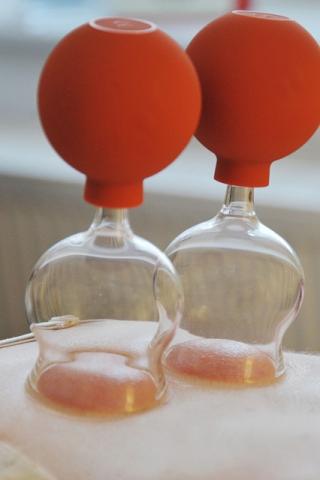Cupping Techniques
 With cupping, there are a number of different techniques and methods that the practitioner may use. You have the two main practices of dry and wet cupping. You also have techniques like fixed cupping, moving cupping, and needle cupping. Additionally, you will find that different professionals use different methods to create the vacuum.
With cupping, there are a number of different techniques and methods that the practitioner may use. You have the two main practices of dry and wet cupping. You also have techniques like fixed cupping, moving cupping, and needle cupping. Additionally, you will find that different professionals use different methods to create the vacuum.
Dry cupping is the most basic form of cupping. The practitioner heats the cup using their preferred method, places it on the skin and then lets it rest on the location for a few minutes.
In wet cupping, the therapist will start with the same process as with dry cupping. After the cup is removed, they will then make small cuts on the skin in the area that was cupped. After that, they will apply a second cup to the area to draw a small amount of blood from the skin.
The difference between fixed and moving cupping is simple. With fixed cupping, the cups stay in one place, and with moving cupping, the cups are moved along the area of treatment. In moving cupping, the therapist may apply a small amount of oil to assist in the gliding of the cups. The addition of moving cups creates a massage effect, and it can provide additional relief.
As treatments, cupping and acupuncture often go together. One way in which these two treatments can be used to complement each other is through the practice of needle cupping. With this option, an acupuncture needle is inserted in the point that is to be addressed. Once the needles are in place, the cups are then placed over the top of them.

